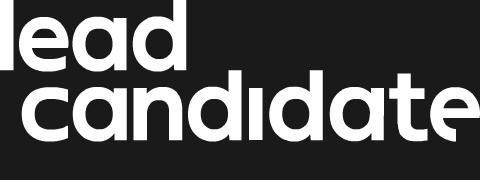
What do people really want from LinkedIn job ads?
16.03.23 Articles11 seconds. That’s how long the average person spends looking at a job ad before deciding if it’s for them or not.
In 2015, it was reported that humans only had an 8-second attention span, a figure that quickly spread like wildfire across the internet accompanied by various goldfish imagery. However, there exists some debate around this stat, with it being deemed a myth by many. Despite this, LinkedIn reports a decrease in attention span when it comes to job searching.
To combat this, LinkedIn recommends that job ads be kept under 150 words.
Panic ensues. Questioning begins:
How do we wax poetic about how great a role is with limited words? How do we get across incredible company culture and values? Have we been wasting our time (and words) on these points if they were just being overlooked?
One thing was clear: we needed to know what people really cared about when it came to job hunting on LinkedIn. What information do they prioritise in those 11 seconds? How would they prefer to begin an application, and what result do they want from clicking that ‘apply’ button?
So, we turned to LinkedIn to get some answers and released three polls. Here are the results…
Question 1

This set of results shows that nearly half of respondents focus on the job description first when considering an application. The trick therefore becomes getting the description of the role across concisely to be absorbed within that 11 second window of attention.
Compensation and benefits are also noted as a top priority, with a quarter of respondents saying that’s where their attention goes first. It’s likely that this response is reflective of the current economic climate, that said employers should still think carefully about how they present this when trying to attract talent.
Coming in next were position requirements, with 20% of respondents looking at this aspect of the job ad first. We find that candidates look at the minimum qualifying criteria to cement their belief that this job is interesting to them and that they have the needed experience to make an interview. However, our experience tells us that a detailed analysis of the position requirements will come later on and that the job ad should act as more of a gateway.
The company was identified by 15% of respondents as the detail they went to first. In our experience, this isn’t reflective of the reasons why candidates ultimately decide to accept or decline an offer. So with a limited recommended word count, extensive information about a company may be something you decide to trim down within a job ad.
Question 2

With over two thirds of respondents preferring to use quick apply, it’ clear that most candidates are looking for a quick, efficient method of application. This isn’t a great surprise, and in our experience, this theme can be seen throughout hiring processes, with employers who use lengthy, drawn out processes running the risk losing the engagement of the candidate.
25% of responses showed candidates are happy to use an application as a vehicle to discover more about an opportunity and company. We have used exactly this approach in the last year with great success, adopting the AIDA marketing model to get peoples attention, generate interest, stimulate desire and create action.

LinkedIn is the leading vehicle for recruitment and job applications in today’s hiring landscape. Therefore, it isn’t really too much of a surprise that LinkedIn Easy Apply came out top when it came to how people like to begin an application process – and the poll was on LinkedIn!
Question 3

What was interesting to see was the comparatively high response in relation to applying on company websites, with 36% of people saying that is where they’d prefer to start their application journey.
To maximise coverage, this result suggests hiring organisations need to make use of the Easy Apply functionality on LinkedIn, but at the same time make sure you are giving potential candidates a route to your website.
What was also interesting was nearly 20% of respondents want to be able to contact the person hiring. This is where having generic email boxes may prove a detractor for candidates who want to be able to speak to someone. I appreciate this is a logistical consideration, but we are dealing in people and that personal interaction, in a super competitive talent market that may just prove to be the deciding competitive advantage you offer!
In Summary
In today’s consumer world, accessibility, efficiency of interaction and customer journey are the deciding factors in how we rank overall experience and make purchasing decisions.
The same is true when it comes to hiring experience and process. The landscape is competitive, people and organisation want to make good decisions, in a timely and efficient manner with an enjoyable experience to boot.
So many hiring organisations lose sight of this. They make flippant, and often naïve associations with Millennials and Gen Z, when we see these kinds of expectations among every age group in our talent communities.
Our advice is to take stock of where you are, proactively seek out feedback for all the stakeholders in your hiring value chain. Audit and critique your hiring process. Innovate. Don’t just do what you’ve always done, because in today’s market that simply isn’t good enough.
Lead Candidate are offering 10 complimentary hiring process audits to organisations during March and April. If you would like to know how your approach to hiring can be refined to accelerate business performance, then contact us today.
